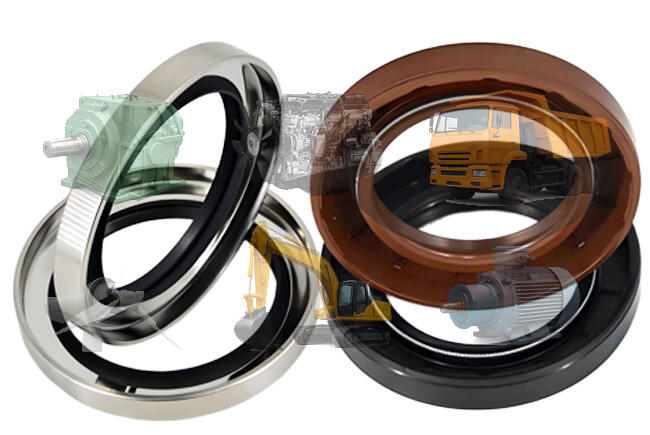When people in our business talk about seals, they often say the same thing: the small parts usually decide whether the big machines keep running or not. The drive shaft seal is a good example. At first glance it looks ordinary—a ring of rubber or PTFE—but its function is anything but minor. Without it, oil leaks out, dust and water creep in, and suddenly the gearbox, motor, or axle that depends on it is no longer reliable.
So, what exactly does a drive shaft seal do? Its job is fairly simple to explain but critical in practice. The seal holds lubricant where it is supposed to be—around bearings and gears—and keeps contamination outside. If you imagine an agricultural tractor working in a dusty field, or a heavy truck running in the rain, the seal is the thin line that prevents mud, water, or grit from mixing with oil. Once that line fails, the whole system starts paying the price.
Materials matter here. The traditional choice has been nitrile rubber (NBR) for general oil resistance. In higher-temperature conditions, like engines or pumps, fluoroelastomer (FKM) is often used. PTFE has become popular where low friction or dry running might occur, for instance in industrial robots or wind turbines. Each has pros and cons, and maintenance managers know that selecting the wrong compound can shorten life dramatically.
Now, maintenance—this is where experience really shows. Most failures we see in the field are not because the seal itself was “bad.” Instead, it’s the shaft being misaligned, the surface being scratched, or the oil running dirty. A distributor once shared with me how a batch of seals failed in less than three months on gearboxes. After checking, it turned out the shafts were too rough, cutting the lips little by little. That case reminded many buyers that when you plan maintenance, you don’t just check the seal—you check the whole environment: shaft finish, oil quality, alignment, and even the installation method.
For OEMs and distributors, another common topic is delivery. Many procurement teams complain that an urgent order can stop a production line if a seal isn’t in stock. That is exactly why brands like NQKSF built up a wide catalog. They keep standard parts ready for dispatch—O-rings, oil seals, and more than ten thousand sizes—so when a customer says, “I need it tomorrow,” the answer is often yes. And when the size isn’t standard, they offer custom service from material selection and structure design to testing, which helps engineers avoid mismatched parts.
Let’s not forget the business side. Buyers usually ask not only about unit cost but also about long-term risk: Can the supplier deliver consistently? Is there technical backup if a problem arises? Here, NQKSF’s position as a manufacturing-based company with its own intelligent factory gives confidence. The brand has been active for over 30 years, recognized as a leader in the sealing industry, exporting to more than 80 countries. Credentials such as provincial innovation center, specialized and innovative enterprise status, and high-tech recognition support its credibility. For distributors, this reduces worry about unstable sources or lack of support.
Where do drive shaft seals apply most? Automotive gearboxes, heavy trucks, agricultural machinery, pumps, motors in automation, and energy equipment like wind turbines are the usual suspects. Each application has its own stress: speed in cars, dust in farming, long service cycles in wind power. Maintenance strategies follow these needs. For example, in a car, you inspect for leaks regularly. In a wind turbine, you may schedule predictive checks with oil analysis.

A final note: wholesalers often ask if sealing systems can be “optimized” rather than just replaced. The answer is yes. With technical empowerment, NQKSF helps customers redesign seals or adjust materials to cut down on premature failures. This reduces maintenance cost and keeps equipment reliable for longer. That is the kind of value that goes beyond supplying a part—it supports the entire operation.
In summary, the drive shaft seal’s function is straightforward: keep oil in, keep dirt out. But behind that simplicity lies a chain of design, material, installation, and maintenance decisions that make the difference between a machine that runs smoothly and one that breaks down early. For procurement managers, distributors, and OEMs, having a partner like NQKSF means not just buying a seal but securing supply, expertise, and long-term confidence.
 Hot News
Hot News